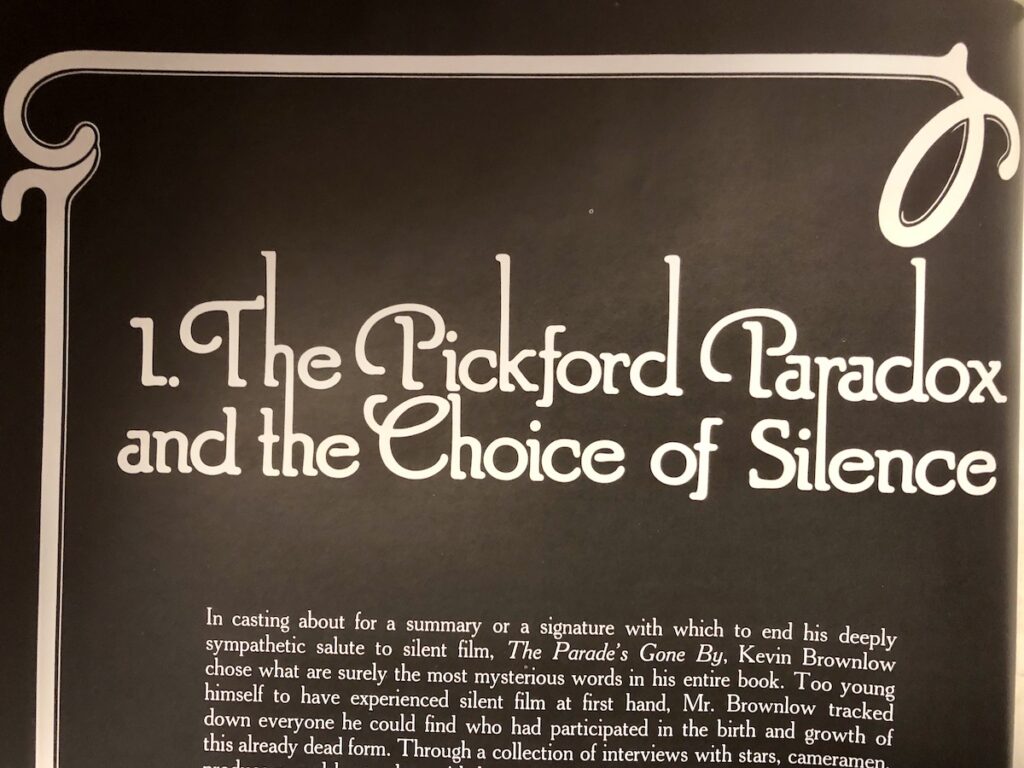Walter Kerr opens his book The Silent Clowns with five chapters on the core aesthetics of Silent Film itself. Perhaps not an obvious choice for a tome on comedy films from the ‘teens and ‘twenties, but I believe that understanding these basic concepts is important — essential, even — to grasping why silent film comedy is its own form and not one where the shift to talkies just meant you were adding talking.
These five chapters, in fact, make up the entire Part One of the book, entitled “The Silent Camera”.
I occasionally revisit these chapters to refresh and remind myself of these concepts, and I assign them to the students in the silent film course I teach at Wesleyan. You may want to read or re-read them as we go along here.
In Chapter 1 of The Silent Clowns — “The Pickford Paradox and the Choice of Silence “ — Walter Kerr anchors his first point about Silent Film on a quote from none other than Mary Pickford. Kerr quotes a line of hers used by Kevin Brownlow in the closing of his book on silent film “The Parade’s Gone By” —
“It would have been more logical if silent pictures had grown out of the talkie instead of the other way round.”
— seizing on Mary’s choice of the word “logical”. Why “logical”?
Kerr posits that art exists in a taking away, saying of Ms. Pickford’s statement:
“What I think she had in mind was a truism not about silent films in particular but about art in general. Logically, art begins in a taking away. No painter or poet or dramatist in his right mind ever attempts to reproduce the abundance of life in 101o. He may wish to evoke the sense of that abundance, in Brueghel’s way or in Shakespeare’s, but he doesn’t do it by constant addition; he does it by constant subtraction. He limits the frame, sacrifices a dimension, chastens color, looks for absences, refusals, self-imposed limitations that will enable him to suggest more with less. It is the only thing he can do.”
This lines up with a quote of Kevin Brownlow’s that I tell audiences at my shows (and now, live-streams) and which is the basis of the course on silent film that I teach at Wesleyan, that with silent film the audience is the final participant in the filmmaking process.
The first post in this series is here.
The previous post is here.
The next post is here.
Affordable copies of The Silent Clowns turn up on eBay.
